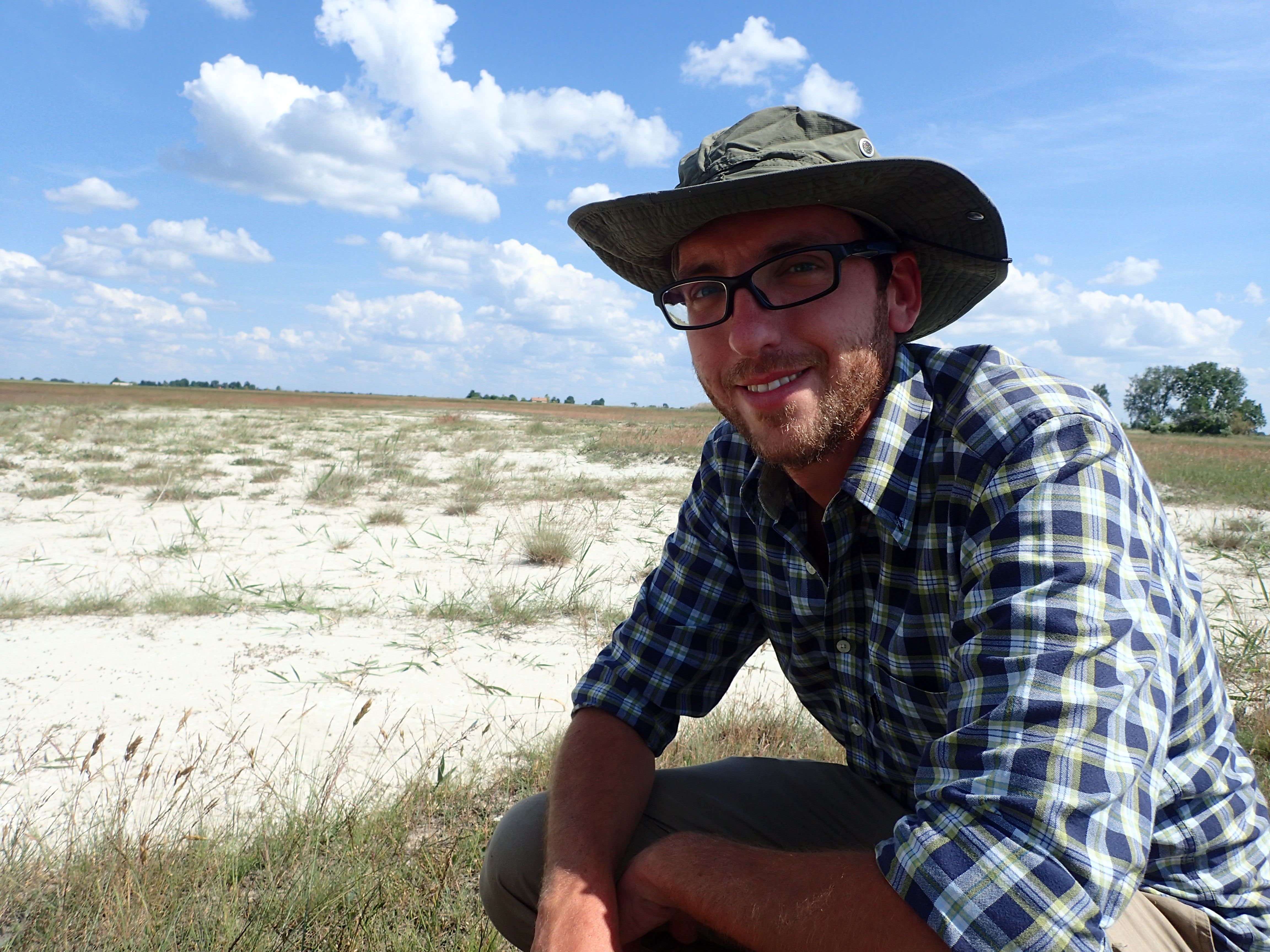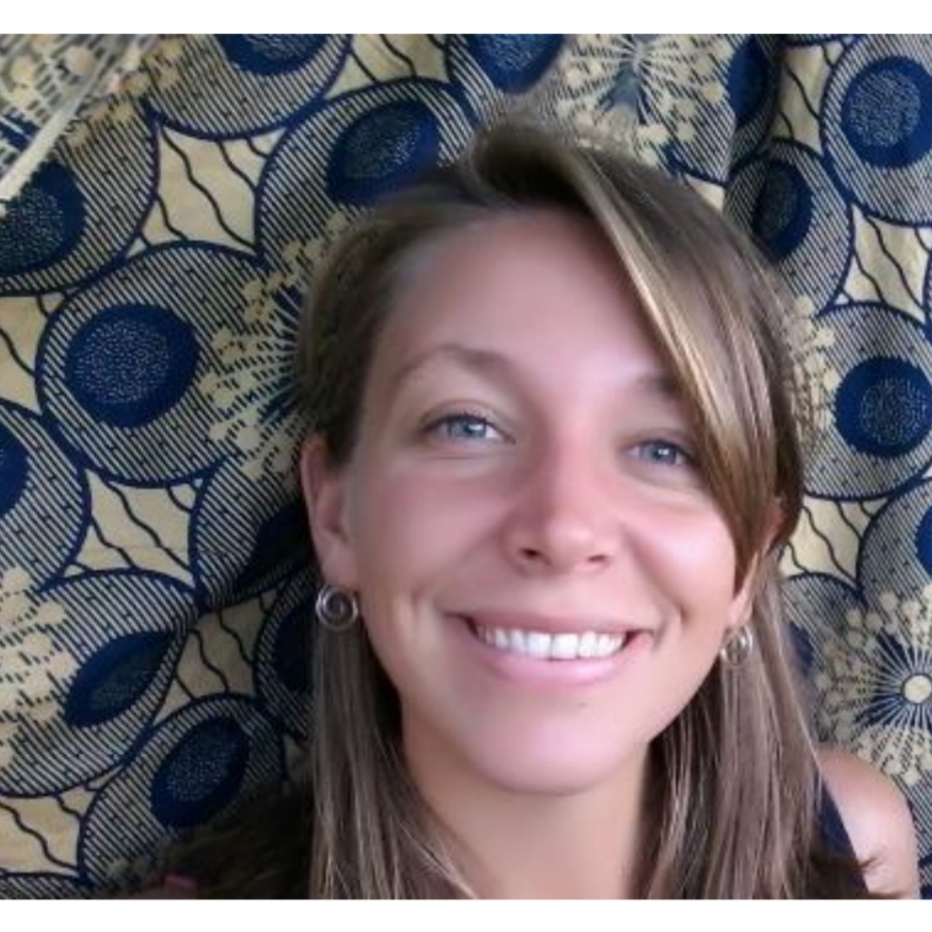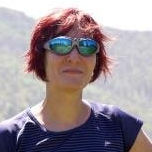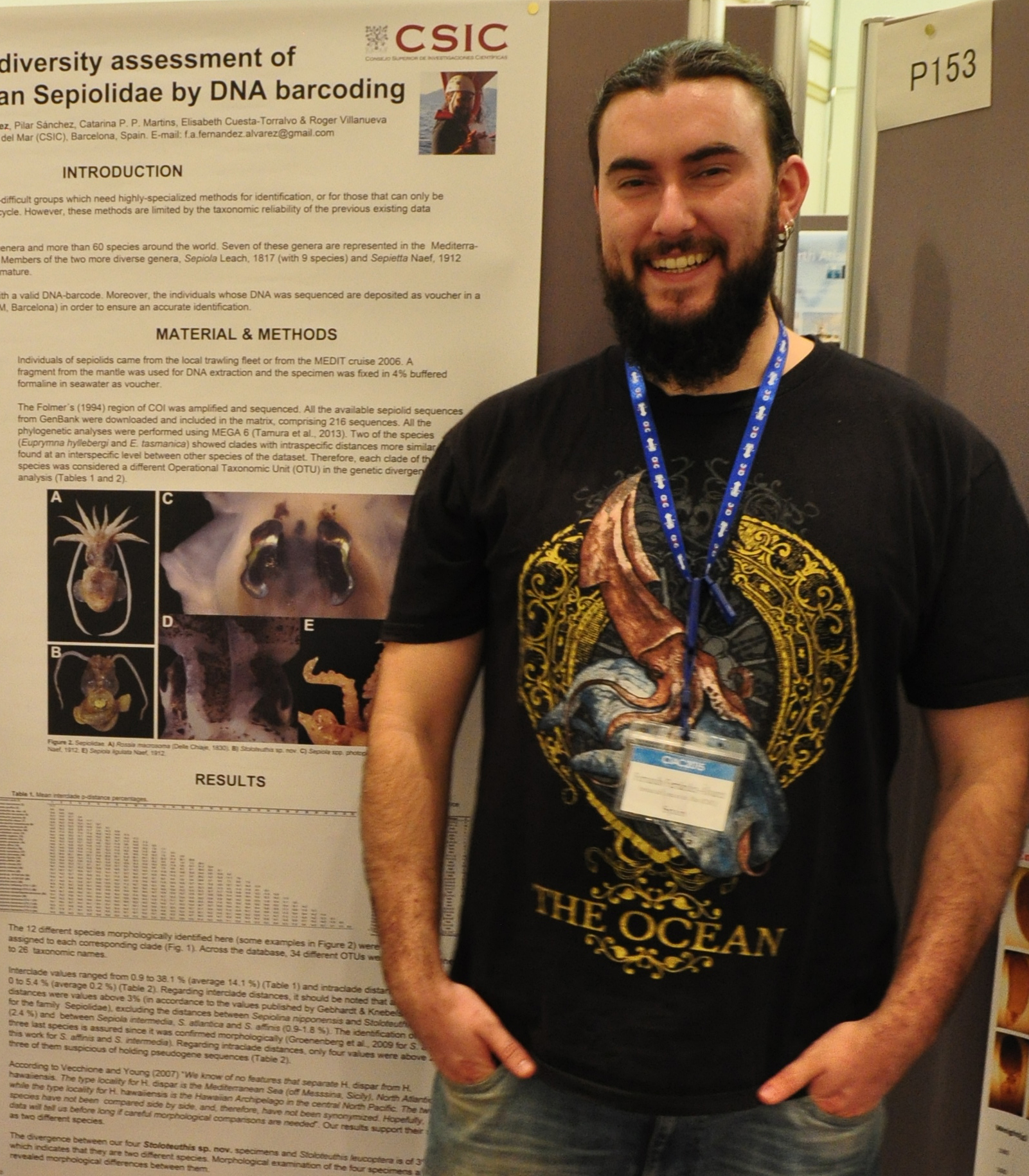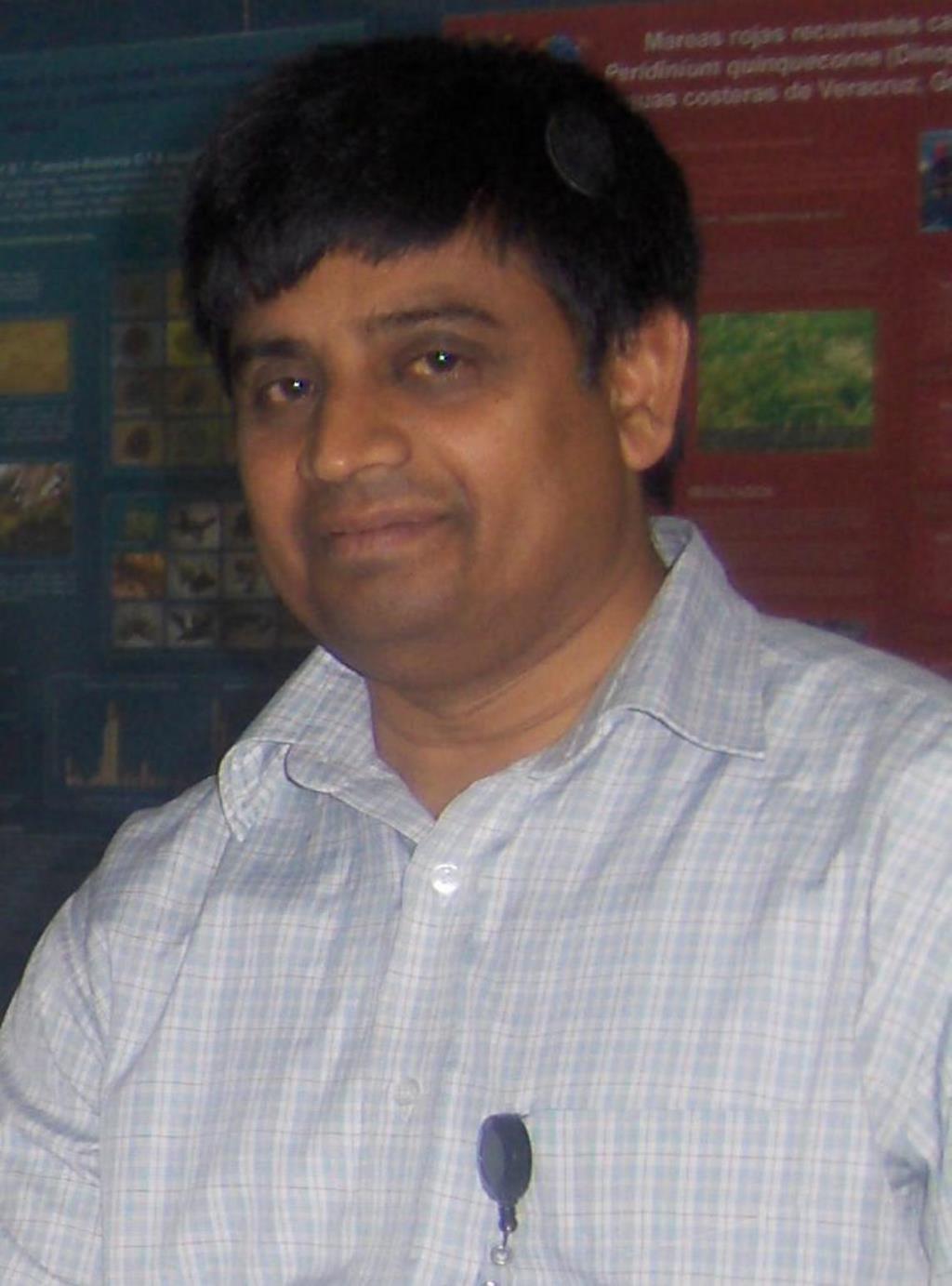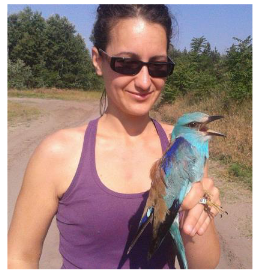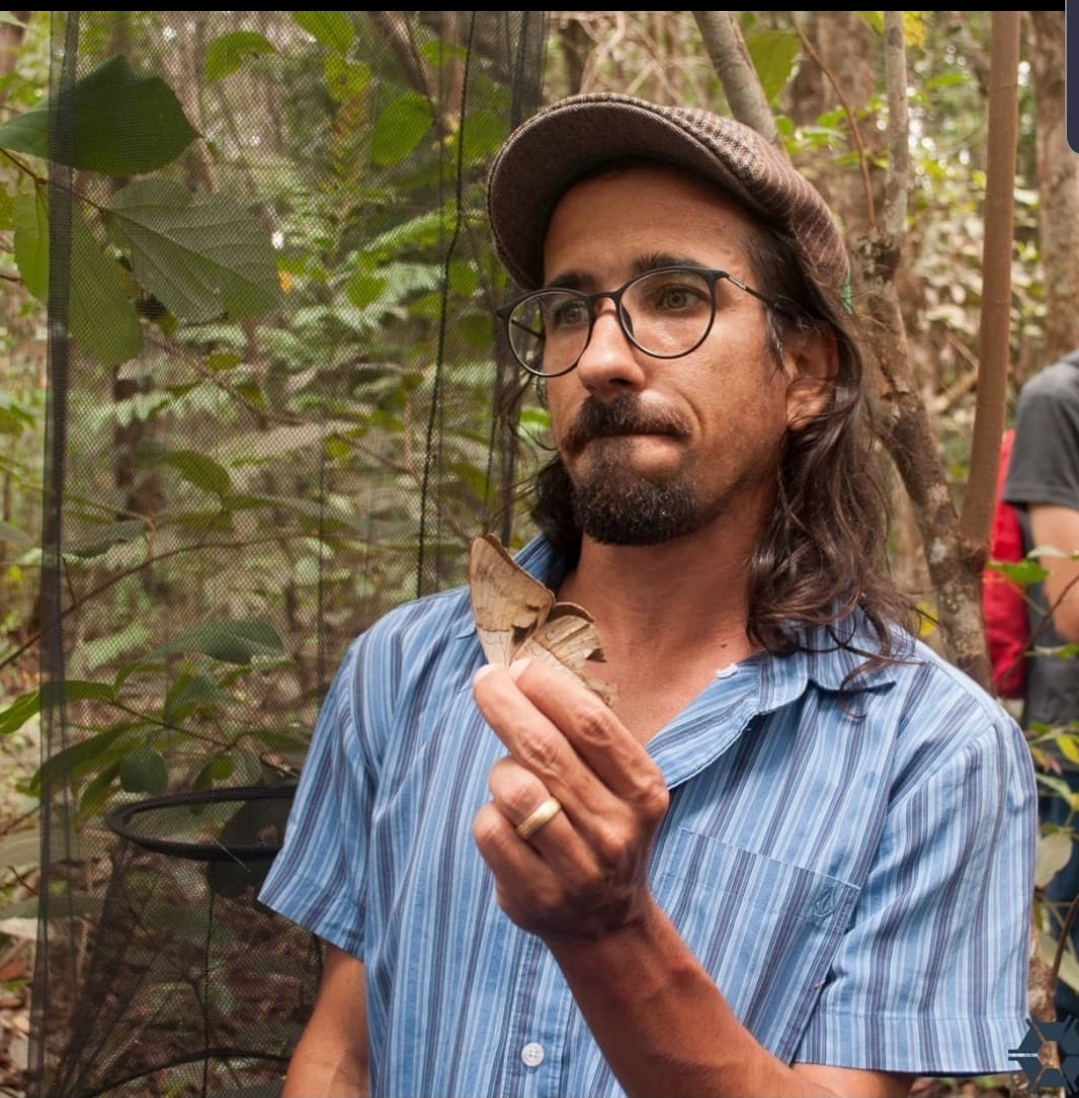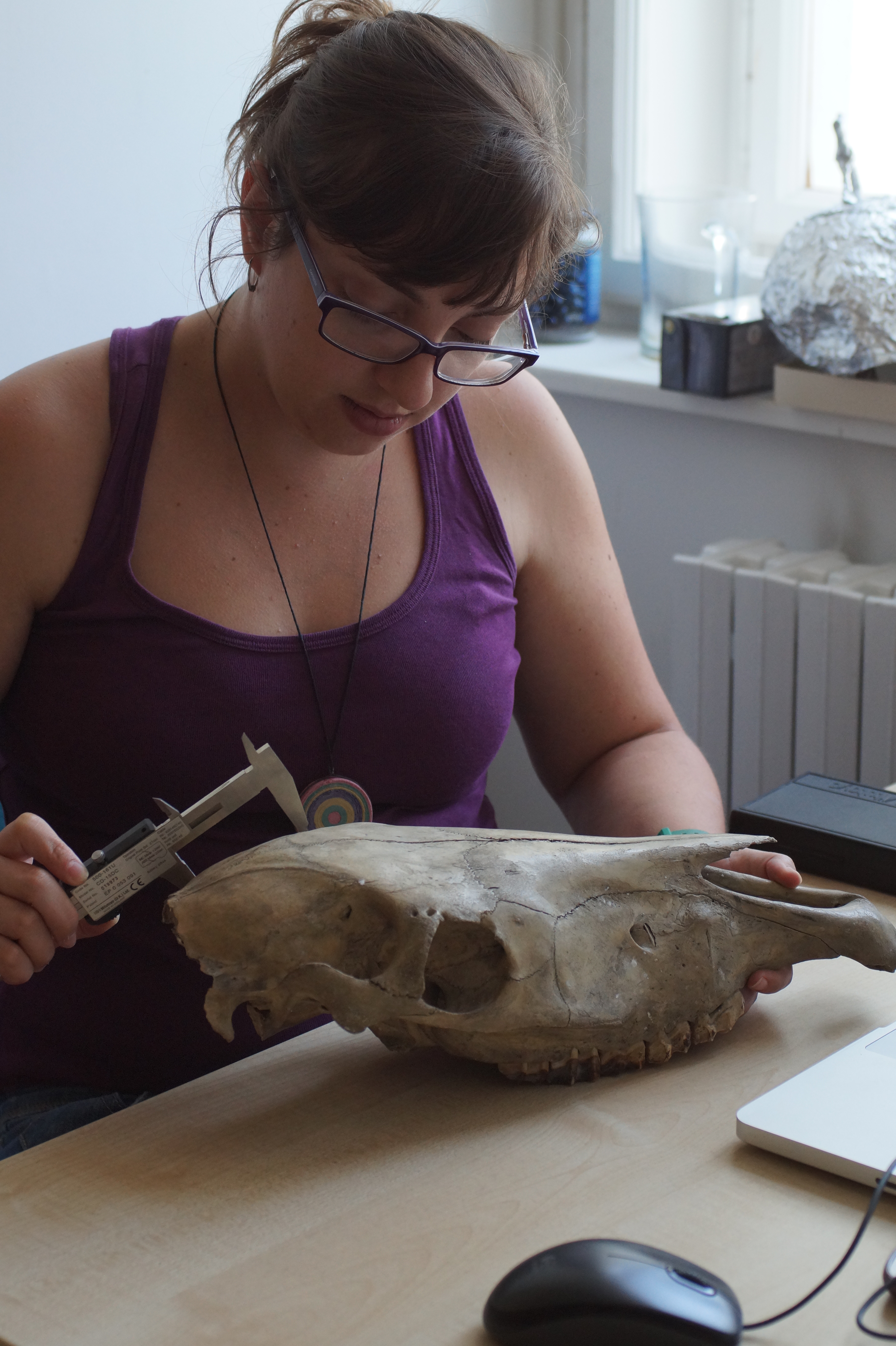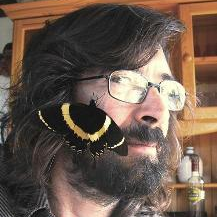
The 1st International Electronic Conference on Biological Diversity, Ecology and Evolution
Part of the International Online Conference on Diversity series
15–31 March 2021
Marine Diversity, Animal Diversity, plant diversity
- Go to the Sessions
-
- a. Marine Diversity
- b. Animal Diversity
- c. Plant Diversity
- d. Microbial Diversity and Culture Collections
- e. Chemical Diversity and Chemical Ecology
- f. Biodiversity Conservation
- g. Biogeography and Macroecology
- h. Phylogeny and Evolution
- i. Biodiversity Loss and Dynamics
- j. Mesophotic Ecosystems Diversity
- k. Invasive Species and Diversity
- Event Details
-
- Welcome from the Chair
- Conference Chairs
- Conference Speakers
- Session Chairs
- BDEE2021 Live Sessions Program
- BDEE Recordings
- Sessions
- List of Accepted Submissions
- List of Video Presentations
- Instructions for Authors
- Best Presentation Award
- Best Paper Award
- Award Winners Announcement
- Conference Secretariat
- Sponsors and Partners
- Events in series IOCDV
We are pleased to announce that the International Electronic Conference on Biological Diversity, Ecology, and Evolution (BDEE 2021) was successfully closed with the high visibility of 19858 views and 14669 unique visitors! Thank you for your active participation in it.
We hope you enjoyed the conference and we would like to take this opportunity to invite you submit your related work to the joint special issue "Selected Papers from 1st International Electronic Conference on Biological Diversity, Ecology, and Evolution (BDEE 2021)".
https://www.mdpi.com/journal/diversity/special_issues/BDEE_2021
Welcome from the Chair
Dear Colleagues,
You are cordially invited to participate in the 1st International Electronic Conference on Biological Diversity, Ecology, and Evolution (BDEE 2021), sponsored by the MDPI open access journal Diversity. The meeting is an opportunity for researchers in the field of science of biodiversity to present their research and exchange ideas with colleagues. This is an electronic conference, removing the need to travel and eliminating participation expenses.
The conference will be organized around the following general topics, providing a forum for presenting and discussing new results. Topics of interest include but are not limited to:
1. Marine diversity
2. Animal diversity
3. Plant diversity
4. Microbial diversity and culture collections
5. Chemical biodiversity and chemical ecology
6. Biodiversity conservation
7. Biogeography and macroecology
8. Phylogeny and evolution
9. Biodiversity loss and dynamics
10. Mesophotic ecosystems diversity
11. Invasive species and diversity
This will be a virtual conference held at www.sciforum.net, a platform developed and sponsored by MDPI to organize and provide technical support for electronic conferences.
The format of the conference is as follows: After abstract acceptance, the authors will submit a pre-recorded video presentation or a series of narrated slides that will be accessible online, open for discussion, comments, and questions during the entire conference and will remain available after the e-conference. Authors are requested to submit a full description of their work in a conference paper that will be peer reviewed and, upon acceptance, probably published in the MDPI Biology and Life Sciences Forum journal. Paper submission is not a requirement for active conference participation.
The participation is free of charge for both authors and attendees. The accepted proceedings papers will probably be published in the MDPI Biology and Life Sciences Forum journal and available online on the MDPI website. Selected extended versions of the papers will be published in a Special Issue of the journal Diversity with a 20% discount on the article processing charge (ISSN 1424-2818; Diversity).
The best conference paper and presentation will receive an award of 500 CHF, as well as an offer to publish an extended paper, free of charge, in the Special Issue of Diversity.
We look forward to engaging in exciting discussions and hearing new ideas and perspectives from experts in the field. All participants are welcome to join the online conference.
Kind regards,
Prof. Dr. Michael Wink
Conference Chairs

Institute of Pharmacy and Molecular Biotechnology, Heidelberg University, Heidelberg, Germany
Prof. Dr. Michael Wink completed his PhD in 1980 at Technische Universität Braunschweig. He is currently a senior professor at Heidelberg University, Institute of Pharmacy and Molecular Biotechnology, and Visiting Professor at CEPROBI, Prince of Songkla University and Northeast Forestry University. He works in the area of natural products, chemical ecology, medicinal and poisonous plants, molecular pharmacology, biotechnology, evolution (molecular systematics, phylogeny, phylogeography of plants and animals), and ornithology. To date, he has authored or coauthored more than 1200 papers published in international journals and conference proceedings. He is the Editor-in Chief of Diversity.
Conference Committee

Department of Veterinary Sciences, University of Trás-os-Montes and Alto Douro, Vila Real, Portugal
Patrícia Alexandra Curado Quintas Dinis Poeta is an EBVS® European Specialist in Veterinary Microbiology and on the ESGVM Executive Committee of ESCMID. He is a member of LAVQ-REQUIMTE, Chemistry Department, Faculty of Science and Technology, University NOVA of Lisbon. He completed his PhD in Veterinary Medicine at the University of Trás-os-Montes and Alto Douro, Portugal and is a Coordinator of the Research Group MicroArt- Microbiology and Antibiotic Resistance Team. He is the Head of the Medical Microbiology Laboratory at UTAD. His research interests are in the characterization of antibiotic resistance mechanisms in bacteria of different origins, such as humans, animals, food, water and the environment, as well as the performance of studies of molecular epidemiology to characterize the genetic lineages of antibiotic resistant bacteria. He is the director of several doctoral and masters’ theses. He is also responsible for research projects funded by private companies and inter-university projects, teaches international courses and master’s degrees and works with several national and international entities. Moreover, he has published more than 200 articles in scientific journals and book chapters. He has provided more than 500 communications at international scientific meetings, presentations at national or Iberian scientific meetings, posters at scientific meetings, publications in GenBank, publications in UniProt, records in MLST, technical and scientific journals and series or educational work. He has received 37 awards. He operates in the areas of Veterinary Science. When it comes to professional activities, he has interacted with 175 workers in the authorship and co-authorship of scientific papers.

California Academy of Sciences, San Francisco, CA, USA

Division of Plant Biology, Department of Biology, University of Patras, Patras, Greece

Botany Department, Faculty of Science, Tanta University, Tanta, Egypt

Department of Sciences and Technology for Agriculture, Forest, Environment and Energy, University of Tuscia, Viterbo, Italy

Department of Forest Physiology and Genetics, Slovenian Forestry Institute, Ljubljana, Slovenia

1. ARC Centre of Excellence for Coral Reef Studies, School of Biological Sciences, The University of Queensland, Brisbane, Australia
2. The Mina & Everard Goodman Faculty of Life Sciences, Bar-Ilan University, Ramat Gan, Israel

Department of Pharmacy, University of Genova, Genova, Italy

Department of Biology, University of Rouen Normandie, Mont-Saint-Aignan, France

University of Western Brittany Brest, Brest, France

Russian State Agrarian University - Moscow Timiryazev Agricultural Academy, Moscow, Russian

Department of Animal Science, University of Pretoria, Pretoria, South Africa

Botanical Garden of Vytautas Magnus University, Kaunas, Lithuania

University of Białystok, Białystok, Poland
Faculty of Science, University of Technology, Sydney, Australia

Department of Biological Sciences, University of Cape Town, Cape Town, South Africa
1. Taxonomy and Systematics Group, Naturalis Biodiversity Center, Leiden, The Netherlands
2. Groningen Institute for Evolutionary Life Sciences, University of Groningen, Groningen, The Netherlands

1. National Center for Scientific Research, UMR 5321, Station for Theoretical and Experimental Ecology, University Paul Sabatier Toulouse III, Toulouse, France
2. National Museum of Natural History, CNRS, Institute of Systematics, Evolution, Biodiversity, Sorbonne University, Paris, France

Department of Palaeontology, University of Vienna, Vienna, Austria
Invited Speakers

California Academy of Sciences, San Francisco, CA, USA

Division of Plant Biology, Department of Biology, University of Patras, Patras, Greece

Botany Department, Faculty of Science, Tanta University, Tanta, Egypt

Department of Forest Physiology and Genetics, Slovenian Forestry Institute, Ljubljana, Slovenia

1. ARC Centre of Excellence for Coral Reef Studies, School of Biological Sciences, The University of Queensland, Brisbane, Australia
2. The Mina & Everard Goodman Faculty of Life Sciences, Bar-Ilan University, Ramat Gan, Israel

Department of Biology, University of Rouen Normandie, Mont-Saint-Aignan, France

University of Western Brittany Brest, Brest, France

DIFAR - University of Genoa Viale Cembrano, GENOA (I), Italy

Russian State Agrarian University - Moscow Timiryazev Agricultural Academy, Moscow, Russian

Department of Biological Sciences, University of Cape Town, Cape Town, South Africa

University of Białystok, Białystok, Poland

Aquatic Zoology Laboratory, Research and Postgraduate Division, National Autonomous University of Mexico, Tlalnepantla, State of Mexico, Mexico

Aquatic Zoology Laboratory, Research and Postgraduate Division, National Autonomous University of Mexico, Tlalnepantla, State of Mexico, Mexico

Normandie Univ, UNIROUEN, INRAE, ECODIV, Rouen, France
Session Chairs

Dr. Luc Legal
Functional Ecology and Environment Laboratory, Paul Sabatier University, Toulouse, France

Dr. Mario A. Pagnotta
Department of Sciences and Technology for Agriculture, Tuscia University, Viterbo, Italy

Prof. Dr. Paolo Giordani
Department of Pharmacy, University of Genova, Genova, Italy

Prof. Dr. Matthieu Chauvat
Department of Biology, University of Rouen Normandie, Mont-Saint-Aignan, France
BDEE2021 Live Sessions Program
Live Session 1: Plants
Date: 15 March 2021
|
Speakers |
Time (CET) |
Title |
|
 |
Michael Wink
Heidelberg University, Germany |
8:30-8:40 |
Opening speech |
 |
Matthieu Chauvat (Session Chair) University of Rouen Normandie, Mont-Saint-Aignan, France Estelle Forey |
8:40-9:00 |
How invasive alien plant species may disrupt above-belowground relationships. |
|
|
Romain Ulmer |
9:00-9:20 |
Macroecological patterns of fruit infestation rates by the invasive fly Drosophila suzukii in the reservoir host plant Sambucus nigra. |
|
|
Arnold Erdélyi |
9:20-9:40 |
Silvicultural practices as main drivers of the spread of Tree of Heaven (Ailanthus altissima (Mill.) Swingle). |
|
|
Katarzyna Puczko |
9:40-10:00 |
Impact Of Flora Communities On Nutrients Dynamics In Hyporheic Zone of Urban Spring Ecosystem. |
|
|
Younes HMIMSA |
10:00-10:20 |
Ampelographic and ampelometric characterization of berries and seeds in traditional vineyards of Morocco. |
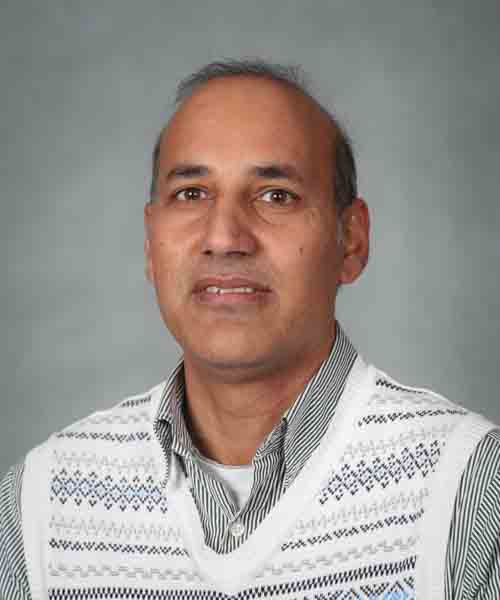 |
Babur Mirza |
10:20-10:40 |
Soybean Root Nodule and Rhizosphere Microbiome: Distribution of Rhizobial and Non-rhizobial Endophytes. |
|
|
Maame Esi Hammond |
10:40-11:00 |
Impact of canopy gap ecology on the diversity and dynamics of natural regeneration in a tropical moist semi-deciduous forest, Ghana. |
 |
Matthieu Chauvat (Session Chair) University of Rouen Normandie, Mont-Saint-Aignan, France |
11:00-11:10 |
Wrap up and concluding remarks as Session Chair. |
Live Session 2: Biodiversity and Conservation
Date: 16 March 2021
|
Speakers |
Time (CET) |
Title |
|
|
|
Paolo Giordani
|
8:50-9:00 |
Opening speech |
|
|
Lucia Varaldo |
9:00-9:20 |
Can Species Distributions Models help to design conservation strategies for narrow-ranged species under climate change? A case study from Santolina genus. |
|
|
Pierre-Henri Gouyon |
9:20-9:40 |
Biodiversity and pesticides, why we are wrong. |
|
|
Matjaž Gregorič |
9:40-10:00 |
Spider webs as eDNA tool for biodiversity assessment of life’s domains. |
|
|
Wilson Frantine-Silva |
10:00-10:20 |
A striking frequency of diploid males in a less suitable environment: the future of the orchid bee Euglossa annectans. |
|
|
Maria Panitsa |
10:20-10:40 |
Plant species diversity and biogeography of two Eastern Mediterranean archipelagos, the Ionian and the Aegean (Greece). |
|
|
Paolo Giordani |
10:40-10:50 |
Wrap up and concluding remarks as Session Chair. |
Live Session 3: Marine & Freshwater Ecology
Date: 22 March 2021
|
Speakers |
Time (CET) |
Title |
|
 |
Michael Wink
Heidelberg University, Germany |
- |
Live session opening |
|
|
Magdalena Grabowska
|
14:00-14:20 |
The role of springs in maintaining the biodiversity of freshwater algae. |
|
|
Daniel Redondo-Gómez |
14:20-14:40 |
Marine and terrestrial scavenging on fish and gull carcasses on a Mediterranean island. |
|
|
Sanja Gottstein |
14:40-15:00 |
Cave water as an ark of crustacean diversity. |
|
|
Fernando Fernández-Álvarez |
15:00-15:20 |
Is cryptic biodiversity a common phenomenon among Atlantic oceanic squids? |
|
|
S.S.S. Sarma |
15:20-15:40 |
Rotifer diversity in selected waterbodies of Mexico. |
|
 |
Sarma Nandini |
15:40-16:00 |
Exotic plankton species in Mexican freshwaters. |
Live Session 4: Animals
Date: 23 March 2021
|
Speakers |
Time (CET) |
Title |
|
 |
Michael Wink
Heidelberg University, Germany |
- |
Live session opening |
|
|
Sarah Fischer
|
9:00-9:20 |
The bird assemblage of the Darwin region (Australia): twenty years, no change. |
|
|
Asha poonia |
9:20-9:40 |
Trends in CITES Listed Bird's Trade in South Asian Countries in View of Evolution of Indian Laws during Last Four Decades |
|
|
Sayantani Basak |
9:40-10:00 |
Urban wildlife and people: opinion and challenges of living together. |
|
|
Orsolya Kiss |
10:00-10:20 |
Possibilities to facilitate the recolonization of the European roller to its historical breeding range in Hungary. |
|
|
Veronika Kharzinova |
10:20-10:40 |
Genetic characteristics of wild and domestic reindeer based on the analysis of mtDNA cytb gene. |
|
|
Geraldo Freire-Jr. |
10:40-11:00 |
Good things come in larger packages: size matters in fruit-feeding butterfly dispersal. |
|
|
Carmen Nacarino-Meneses |
11:00-11:20 |
Reconstructing the biology of extinct horses from hard-tissue histology: the case of a South African hipparionine. |
|
|
Luc Legal (Session Chair) |
11:20-11:30 |
Wrap up and concluding remarks as Session Chair. |
BDEE Recordings
BDEE | 1st live session
Plants
Date: 15th March 2021, 8:30am CET
During the inauguration of the 1st International Electronic Conference on Biological Diversity, Ecology and Evolution lead by Prof. Dr. Michael Wink and Prof. Dr. Matthieu Chauvat, we enjoyed the talks of 7 main speakers. The presentations were followed by a fruitful discussion and a Q&A session.
The live session was offered via Zoom and required registration to attend. The full recording can be found below.
BDEE | 2nd live session
Biodiversity and Conservation
Date: 16th March 2021, 8:50am CET
During the second live session of the 1st International Electronic Conference on Biological Diversity, Ecology and Evolution lead by Prof. Dr. Michael Wink and Prof. Dr. Paolo Giordani, 5 excellent speakers took to the floor to talk about Biodiversity and Conservation. Each presentations were followed by a fruitful discussion and a Q&A session.
The live session was offered via Zoom and required registration to attend. The full recording can be found below.
BDEE | 3rd live session
Marine and Freshwater Ecology
Date: 22nd March 2021, 2:00pm CET
During the third live session of the 1st International Electronic Conference on Biological Diversity, Ecology and Evolution lead by Prof. Dr. Michael Wink, 6 excellent speakers took to the floor to talk about Marine and Freshwater Ecology. Each presentations were followed by a fruitful discussion and a Q&A session.
The live session was offered via Zoom and required registration to attend. The full recording can be found below.
BDEE | 4th live session
Animal Ecology
Date: 23nd March 2021, 9:00am CET
During the fourth live session of the 1st International Electronic Conference on Biological Diversity, Ecology and Evolution lead by Prof. Dr. Michael Wink and Dr. Luc Legal, we enjoyed the talks of 7 main speakers discussing about Animal Ecology. Each presentations were followed by a fruitful discussion and a Q&A session.
The live session was offered via Zoom and required registration to attend. The full recording can be found below.
Sessions
B. Animal Diversity
C. Plant Diversity
D. Microbial Diversity and Culture Collections
E. Chemical Diversity and Chemical Ecology
F. Biodiversity Conservation
G. Biogeography and Macroecology
H. Phylogeny and Evolution
I. Biodiversity Loss and Dynamics
J. Mesophotic Ecosystems Diversity
K. Invasive Species and Diversity
List of accepted submissions (122)
| Id | Title | Authors | Presentation Video | Poster PDF | |||||||||||||||||||||||||||||||||||||
|---|---|---|---|---|---|---|---|---|---|---|---|---|---|---|---|---|---|---|---|---|---|---|---|---|---|---|---|---|---|---|---|---|---|---|---|---|---|---|---|---|---|
| sciforum-043918 | Good Things Come in Larger Packages: Size Matters in Neotropical Fruit-Feeding Butterfly Dispersal † | , , , , , , , , | N/A |

|
Show Abstract |
||||||||||||||||||||||||||||||||||||
|
Body size correlates to many aspects of a species' natural history, such as life span, abundance, and dispersal capacity. However, contrasting trends have been reported for the relationship between body size and these ecological traits. We have marked and recaptured 539 individuals from 27 species of fruit-feeding butterflies to study how body size affect species abundances, dispersal, and detectability in a Neotropical savanna (Cerrado). Body size has shown to be an efficient predictor of abundance, however this association was not significant after phylogeny was taken into account. Moreover, body size has positively influenced the dispersal rate, distance, and individual detectability, indicating that larger butterflies have a greater proportion of dispersing individuals over longer distances, and were detected through longer periods, than their smaller relatives. Large butterflies demand more resources, which may be forcing them to disperse in search for better habitats. On the other hand, smaller species may be better able to survive in small patches, which is explained by their lower dispersal ability. Nevertheless, their lower dispersal ability, if not compensated by large population sizes, may threaten the small-bodied species inhabiting environments with intense deforestation rates, such as the Cerrado. Finally, our study highlights the importance to consider species evolutionary history in order to study complex trait-environment relationships. |
|||||||||||||||||||||||||||||||||||||||||
| sciforum-044058 | DNA Barcoding of Kemp’s Ridley (Lepidochelys Kempii) in México † | , , , , , |
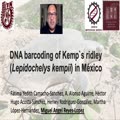
|
N/A |
Show Abstract |
||||||||||||||||||||||||||||||||||||
|
From the 7 existing species of sea turtles, two are endemic and one out of them inhabits the Gulf of Mexico and nests mainly in the Rancho Nuevo (RN) Sanctuary, Aldama, Tamaulipas, Mexico. The objective of this work was to determine the DNA barcode by COI gene sequences in Kemp’s ridley turtle (Lepidochelys kempii) and to estimate their genetic divergence and diversity. One hundred and ten new sequences were obtained from the Kemp’s ridley turtles from RN sanctuary and compared with the 13 sequences reported in BOLD database. Sequences of nearly 700 bp of Kemp’s ridley were aligned among them and compared to 7 different sea turtle species; all new sequences will be added to the BOLD database. Genetic divergence showed a clear separation between other species (0.02 to 0.12), while their relationship with the olive ridley sea turtle (Lepidochelys olivacea) was confirmed (0.02). Also, the result of the haplotype network showed 47 haplotypes, 46 out of which were novel and only one was the most predominant, it belonged to RN sanctuary. The phylogenetic tree showed and confirmed the separation into 2 main clades or families and one out of them, contained the remaining 6 sea turtles species. Finally, DNA barcode for Kemp’s ridley was obtained. In conclusion, there was clear evidence that DNA barcode by the COI gene is useful for the study of Kemp’s ridley turtles, being able to discriminate between dominant and new haplotypes from those already reported, as well as study phylogeny and genetic diversity in Kemp’s ridley. |
|||||||||||||||||||||||||||||||||||||||||
| sciforum-043971 | The Future Marine Protected Area “Jbel Moussa”: Balance between Conservation Measures and Fishermen Well-Being † | , | N/A | N/A |
Show Abstract |
||||||||||||||||||||||||||||||||||||
|
Marine protected areas (MPAs) have been created to preserve biodiversity and manage human activities. Unfortunately, many of these MPAs have failed to accomplish their goals because fishermen well-being was neglected. Thus, taking in account fishermen perceptions will undoubtedly contribute to MPAs success and durability. In this paper we focused on assessing fishermen perception of the future marine protected area “Jbel Moussa” situated in northern Morocco. Results showed that the majority of fishermen affirm that the set of this MPA will lead to a reduction in catches and to an increase in costs and charges. They affirm that it will have to be managed jointly with locals according to “top-dow bottom up” management approach to make it reach its goals,this will avoid conflicts likely to occur during the application of the regulations specific to the future MPA. In order to work for the success of the future MPA, fishermen must take part in the management process. The authorities have to organize meetings with fishermen to discuss about benefits, mode of governance, zoning, etc… Knowing all these factors, we can move towards better management of resources, finding a balance between preserving the marine ecosystem and the well-being of fishermen. |
|||||||||||||||||||||||||||||||||||||||||
| sciforum-044036 | Variability of Micronektonic Crustacean Community along a Latitudinal Transect in the Atlantic Ocean: Implications for Carbon Export | N/A |

|
Show Abstract |
|||||||||||||||||||||||||||||||||||||
|
The micronekton community of pelagic shrimps was studied by means of taxonomic composition, abundance and biomass analyses, across a latitudinal transect in the Atlantic Ocean from off Brazil coast (15 °S) to the south of Iceland (55 °N). Total abundance and biomass were hauled by Mesopelagos net with a mouth opening of 5 × 7 m and a total length of 58 m, tracked by a cable. Temperature, conductivity, pressure, dissolved oxygen and fluorescence were recorded by a Seabird 911Plus conductivity temperature depth (CTD) profiler; with a mounted Dissolved Oxygen Sensor and Seapoint Chlorophyll Fluorometer Sensor. Different depth levels were established and samples were taken during the daytime and nightly. 38 different species were identified of 8 different families. Sergestidae and Euphausiidae were the most abundant and Acanthephyridae was the family that most contributed to the total biomass. Pelagic shrimp assemblages, related with latitudinal changes in biomass and abundance, agreed with previous delimitation of ecoregions in the Atlantic Ocean. Diel vertical migrations were detected along the transect, with a maximum of biomass within the oxygen minimum zone (OMZ) during the daytime. We estimated 158 millions tC of biomass of decapods, euphausiids and lophogastrids in the Atlantic Ocean. |
|||||||||||||||||||||||||||||||||||||||||
| sciforum-043986 | Biogeographic Distribution of Cedrela spp. Genus in Peru Using MaxEnt Modeling: A Conservation Approach † | , , | N/A | N/A |
Show Abstract |
||||||||||||||||||||||||||||||||||||
|
Expansion of croplands and livestock activities over the time have been considered as major driver for deforestration in Peru. Such severe deforestration activities significantly reduced the number of timber species particularly the genus Cedrela spp. that have high economic and ecological value in current time. Recently Cedrela spp. has been incorporated (28 August 2020) into appendix II of the Convention on International Trade in Endangered Species of Wild Fauna and Flora (CITES), a group of species that could be in danger in near-future. Considering this value, we modelled the biogeographic distribution of 10 species of the genus Cedrela (i.e., C. odorata, C. montana, C. fissilis, C. longipetiolulata, C. angustifolia, C. nebulosa, C. kuelapensis, C. Saltensis, C. weberbaueri and C. molinensis) with the objective to identify if the area legally protected by Protected Natural Areas (PNA), and prioritizing research and conservation/restoration areas of this particular genus. In this regard, 33 different environmental variables were used (19 bioclimatic variables, 3 topographic, 9 edaphic, solar radiation and relative humidity) throughout Peruvian Amazon using a maximum entropy model (MaxEnt). It was observed that 6.67% (86,235.24 km2) of the Peruvian territory presents a high probability of distribution of the evaluated species and whereas the PNA protects only 4.42% (8363.09 km2) of the territory that covers genus Cedrela. Furthermore, we have identified that 11.65% (21,345.16 km2) of the area have highly prone to degradation for genus Cedrela that needs urgent attention for protection and restoration. We believe that this study will contribute as a tool for the processes of conservation of threatened species, conservation of biodiversity, management and sustainable use of forest resources. |
|||||||||||||||||||||||||||||||||||||||||
List of Video Presentations
Possibilities to Facilitate the Recolonization of the European Roller to its Historical Breeding Range in Hungary
By Orsolya Kiss, Béla Tokody, Károly Nagy, Zsolt Végvári
Check and comment the Related Paper here.
Microbial Drivers of Methane Emissions from Unrestored Industrial Salt Ponds
By Clifton Bueno de Mesquita, Jinglie Zhou, Susanna Theroux, Wyatt Hartman, Ye Tian, Susannah Tringe
Check and comment the Related Paper here.
Transhumance Offers Food Pulse to Scavengers
By Natividad Aguilera-Alcalá, Eneko Arrondo, Roberto Pascual-Rico, Zebensui Morales-Reyes, J.M. Gil-Sánchez,
José Antonio Donázar, Marcos Moleón, José Antonio Sánchez-Zapata
Check and comment the Related Paper here.
We are Losing Unknown Diversity: Case Studies from Lichens
By Paolo Giordani, Renato Benesperi, Juri Nascimbene
Check and comment the Related Paper here.
Native People’s Perception of Trees in the Urban Landscape of the Bay of Naples
By Adriano Stinca *, Luigi Marfella, Assunta Esposito
Check and comment the Related Paper here.
Functional Role of NAC Transcription Factors in Stress Responses and Genetic Diversity of Rice Plants Grown under Salt Stress Conditions
By Mohamed A. El-Esawi
Check and comment the Related Paper here.
Instructions for Authors
Submission should be completed online by authors by registering with https://sciforum.net/ and using the “Start New Submission” function once logged into system.
- Scholars interested in participating in the conference can submit their abstract (about 200–300 words) online at this website until 20 January 2021 15 February 2021 (Abstract Deadline).
- Based on the submitted abstract, the Conference Committee will conduct a pre-evaluation of whether a contribution from the authors of the abstract will be welcome for the 1st International Electronic Conference on Biological Diversity, Ecology, and Evolution. All authors will be notified by 5 February 2021 20 February 2021 about the acceptance of their abstract.
- If the abstract is accepted for this conference, the author will be invited to prepare a full description of their work (max. 8 pages), optionally accompanied by a PowerPoint presentation/poster, until the submission deadline of 1 March 2021.
- The conference proceedings papers and presentations will be available for discussion on https://sciforum.net/conference/BDEE2021 during the time of the conference 15-31 March 2021.
- The accepted proceedings papers will probably be published as one dedicated volume in the MDPI Biology and Life Sciences Forum journal. Publication of proceedings paper is free of charge.
Note: Before publication, Biology and Life Sciences Forum journal will review accepted papers using the powerful text comparison tool: iThenticate. This procedure aims to prevent scholarly and professional plagiarism.
Submissions with a high repetition rate and lack of novelty will not be published in the conference proceedings. - The open access journal Diversity will publish a conference Special Issue, while accepted abstracts will be published in the conference proceedings. After the conference, the Conference Committee will select abstracts for which extended papers may be included for publication in the Special Issue of the journal Diversity (the submission to the journal is independent from the conference proceedings and will follow the usual process of the journal, including peer review and application of an APC).
Proceedings Manuscripts
Manuscripts for Proceedings must conform to the following structure:
Title
- Full author names
- Affiliations (including full postal address) and authors’ email addresses
- Abstract (200–250 words)
- Keywords
- Introduction
- Methods
- Results and Discussion
- Conclusions
- (Acknowledgments)
- References
Manuscripts should be prepared in MS Word or any other word processor and should be converted to PDF format before submission. The publication format will be PDF. The manuscript should count at least 3 pages (incl. figures, tables, and references) .
Microsoft Word
Authors must use the Microsoft Word template to prepare their manuscript. Using the template file will substantially shorten the time to complete copy-editing and publication of accepted manuscripts. Manuscript prepared in MS Word must be converted into a single file before submission. Please do not insert any graphics (schemes, figures, etc.) into a movable frame which can superimpose the text and create difficulties related to layout.
Manuscript Preparation
- Paper Format: A4 paper format, the printing area is 17.5 cm × 26.2 cm. The margins should be 1.75 cm on each side of the paper (top, bottom, and left and right sides).
- Formatting/Style: Papers should be prepared following the style of the BDEE2021 template. The full titles and cited papers must be given. Reference numbers should be placed in square brackets [ ], and placed before the punctuation; for example, [4] or [1–3], and all the references should be listed separately as the last section at the end of the manuscript.
- Author List and Affiliation Format: Authors’ full first and last names must be given. Any abbreviated middle names can be added. For papers written by various contributors, a corresponding author must be designated. The PubMed/MEDLINE format is used for affiliations: complete street address information including city, zip code, state/province, country, and email address should be added. All authors who contributed significantly to the manuscript (including writing a section) should be listed on the first page of the manuscript, below the title of the article. Other parties, who provided only minor contributions, should only be listed under Acknowledgments. A minor contribution might be a discussion with the author, reading through the draft of the manuscript, or performing English corrections.
- Figures, Schemes, and Tables: Authors are encouraged to prepare figures and schemes in color. Full color graphics will be published free of charge. Figure and schemes must be numbered (Figure 1, Scheme I, Figure 2, Scheme II, etc.) and an explanatory title must be added. Tables should be inserted into the main text with numbers and titles supplied for all tables. All table columns should have an explanatory heading. Please supply legends for all figures, schemes, and tables. The legends should be prepared as a separate paragraph of the main text and placed in the main text before a table, figure, or scheme.
Presentation Slides
Authors are encouraged to prepare a presentation in PowerPoint or similar software, to be displayed online along with the manuscript. Slides, if available, will be directly displayed on the website using Sciforum.net’s proprietary slides viewer. Slides can be prepared in exactly the same way as for any traditional conference where research results can be presented. Slides should be converted to the PDF format before submission so that our process can easily and automatically convert them for online displaying.
Video Presentations
Authors are also encouraged to submit video presentations. The video should be no longer than 20 minutes and be prepared with the following formats:
- MOV
- MPEG4
- MP4
- AVI
- WMV
- MPEGPS
- FLV
The video should be submitted via email before 1 March 2021.
Presentation of Posters
Posters will be available on this conference website during and after the event. As with papers presented at conferences, participants will be able to ask questions and make comments about the posters. Posters can be presented without an accompanying Proceedings paper will be available online on this website during and after the e-conference. However, they will not be added to the proceedings of the conference.
Potential Conflicts of Interest
It is the authors’ responsibility to identify and declare any personal circumstances or interests that may be perceived as inappropriately influencing the representation or interpretation of clinical research. If there are no conflicts, please state here “The authors declare no conflicts of interest”. This should be conveyed in a separate “Conflicts of Interest” statement preceding the “Acknowledgments” and “References” sections at the end of the manuscript. Financial support for the study must be fully disclosed under the “Acknowledgments” section.
Copyright
MDPI, the publisher of the Sciforum.net platform, is an open access publisher. We believe that authors should retain the copyright to their scholarly works. Hence, by submitting a communications paper to this conference, you retain the copyright of your paper, but you grant MDPI the non-exclusive right to publish this paper online on the Sciforum.net platform. This means you can easily submit your paper to any scientific journal at a later stage and transfer the copyright to its publisher (if required by that publisher).
Best Presentation Award
To acknowledge the support of the conference esteemed authors and recognize their outstanding scientific accomplishments, we are pleased to launch the Best Presentation Award. One winner will be selected and each winner will receive a cash award of 500 CHF and a certificate.
The winner will be announced after the conference.
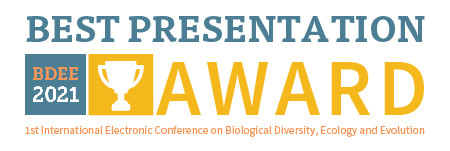
Terms and Conditions:
- Submit full paper with video uploaded after short abstract is accepted
- Originality / Novelty of the paper
- Significance of Content
- Scientific Soundness
- Interest to the readers
- English language and style
Best Paper Award
To acknowledge the support of the conference esteemed authors and recognize their outstanding scientific accomplishments, we are pleased to launch the Best Paper Award. One winner will be selected and each winner will receive a cash award of 500 CHF and a certificate.
The winner will be announced after the conference.
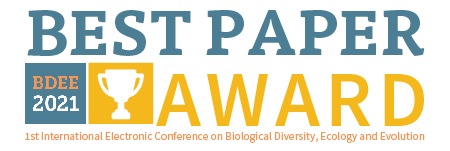
Terms and Conditions:
- Submit full paper to the Special Issue
- Originality / Novelty of the paper
- Significance of Content
- Scientific Soundness
- Interest to the readers
- English language and style
Award Winners Announcement
Winners Announced – BDEE2021 Best Paper Award & Best Presentation Award
We are so pleased to announce that the winners of BDEE2021 Best Paper Award & Best Presentation Award have been selected by the Conference Committee. A total of two papers stand out, and the winner will receive a 500 CHF bonus and award certificate. Come join us and congratulate them!
Best Paper Award

The Bird Assemblage of the Darwin Region (Australia): Twenty Years, No Change †
by Sarah Fischer, Andrew C. Edwards, Patrice Weber , Stephen T. Garnett, and Timothy G. Whiteside
Best Presentation Award

Marine and Terrestrial Scavenging on Fish and Gull Carcasses on a Mediterranean Island
by Daniel Redondo-Gómez, M.-Martina Quaggiotto, David M. Bailey, Sergio Eguía, Zebensui Morales-Reyes, Beatriz de las Nieves López-Pastor, Daniel Martín-Vega, Carlos Martínez-Carrasco, Esther Sebastián-González, José Antonio Sánchez-Zapata, and Marcos Moleón
We would also like to thank all the authors of the 122 published papers, thank you for your participation, and we look forward to seeing you at the next electronic conference!
The Awards
The award will consist of 500 Swiss Francs and a certificate.
The award will consist of 500 Swiss Francs and a certificate.
Conference Secretariat
Ms. Emma Li
Ms. Eve Yang
Email: bdee@mdpi.com
D. Microbial Diversity and Culture Collections
E. Chemical Diversity and Chemical Ecology
G. Biogeography and Macroecology
I. Biodiversity Loss and Dynamics
J. Mesophotic Ecosystems Diversity
Show all accepted abstracts (1) Hide accepted abstracts (1)
List of Accepted Abstracts (1) Toggle list





















